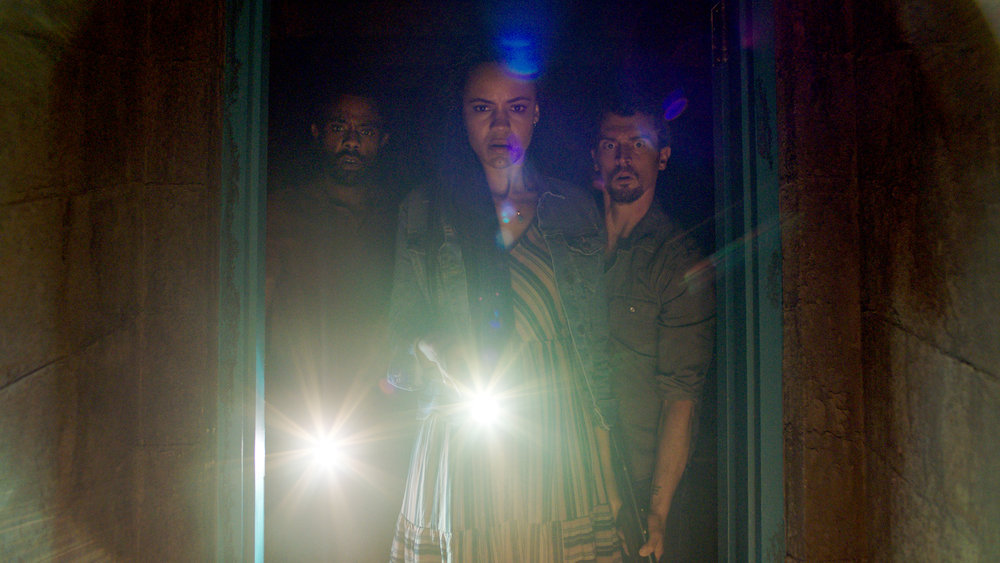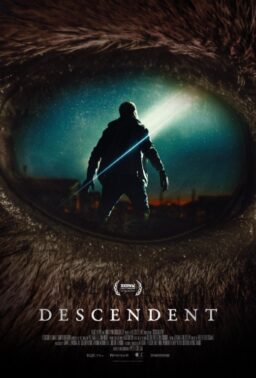SyFy’s “Channel Zero” has built a small but loyal following by delivering solid, reliable genre entertainment across three six-episode seasons. Each iteration of “Channel Zero” is based on a “creepypasta,” the term for a series of reader-produced horror stories online. Think of them as a modern variation on the old-fashioned ghost story, told around the wifi router instead of the campfire. It started with arguably the most famous in “Candle Cove,” an ambitious but kinda clunky offering, and improved greatly with the Lynchian “No-End House.” Earlier this year, we lived through “Butcher’s Block,” and “The Dream Door” starts Friday, airing over six consecutive nights, so the finale can drop on Halloween. Not only is the delivery of the show interesting—it feels like a way to compete with binge-able phenomenon like “The Haunting of Hill House”—but the show itself works yet again. This has become a more reliable anthology series than even “American Horror Story,” never getting the same attention as the Ryan Murphy affair but finding memorable takes on classic tales. Creepypastas are often simple, effective, short stories, and “Channel Zero” has replicated their impact in ways that no one could have expected when this series was announced.

“The Dream Door” is very loosely based on Charlotte Bywater’s “Hidden Door,” really only taking the inciting incident of that very short story. It centers on newlyweds, Tom Hodgson (Brandon Scott) and Jillian Hope Hodgson (Maria Sten), who move back into an old family home of Tom’s. They’re remodeling and starting a new life, but there are some issues bubbling under the surface, including a lack of trust on Jillian’s part, which may be well-earned by Tom’s behavior. One day, Tom asks Jillian to come down to the basement. Before he does, he asks her to picture a blank, nondescript wall down there. It’s so she’ll be all the more surprised when there’s now a door on it.
Did someone come in the middle of the night and install a door? Why can’t they open it? Crowbars, sledgehammers, even a shotgun—the door doesn’t budge. From here, “The Dream Door” goes to a lot of complex, interesting places that I won’t spoil. Suffice it to say, the door is just the beginning and not really the focus. The excellent tagline for “The Dream Door” is more indicative of the overall narrative: “Not Imaginary. Not a Friend.” It turns out that Jillian has an imaginary friend named Pretzel Jack, a contortionist clown, and, well, he’s come back to play. And he looks like this …

“The Dream Door” isn’t really like anything on else on television. It’s not as flashy or slick as “AHS” and not as moody as “Hill House,” finding its own disconcerting rhythms thanks to strong genre director E.L. Katz (“Cheap Thrills”), who shot all six episodes. Katz has a no-nonsense style, not getting overly precious with the filmmaking but finding effective ways to convey looming dread. More than anything else, “The Dream Door” reminded me of “It Follows,” another piece of suburban horror in which an unstoppable, always moving force manifests from human need and action. The series plays with relatable issues like unresolved marital baggage, it just manifests them in a terrifying clown.
It’s not flawless. Some of the performances, even in lead roles, are just a bit off (definitely not in supporting, in which you’ll find the legendary Barbara Crampton and always-solid Steven Weber), and I couldn’t shake the feeling that there’s a four-episode version of this story that’s stronger than the six. And yet with so much television that looks like so much other television, I find myself looking forward to each version of “Channel Zero” more than a lot of returning series. Like the stories on which it’s based, it seeks to unsettle you more than shock or disturb. And “The Dream Door” definitely does exactly that.












